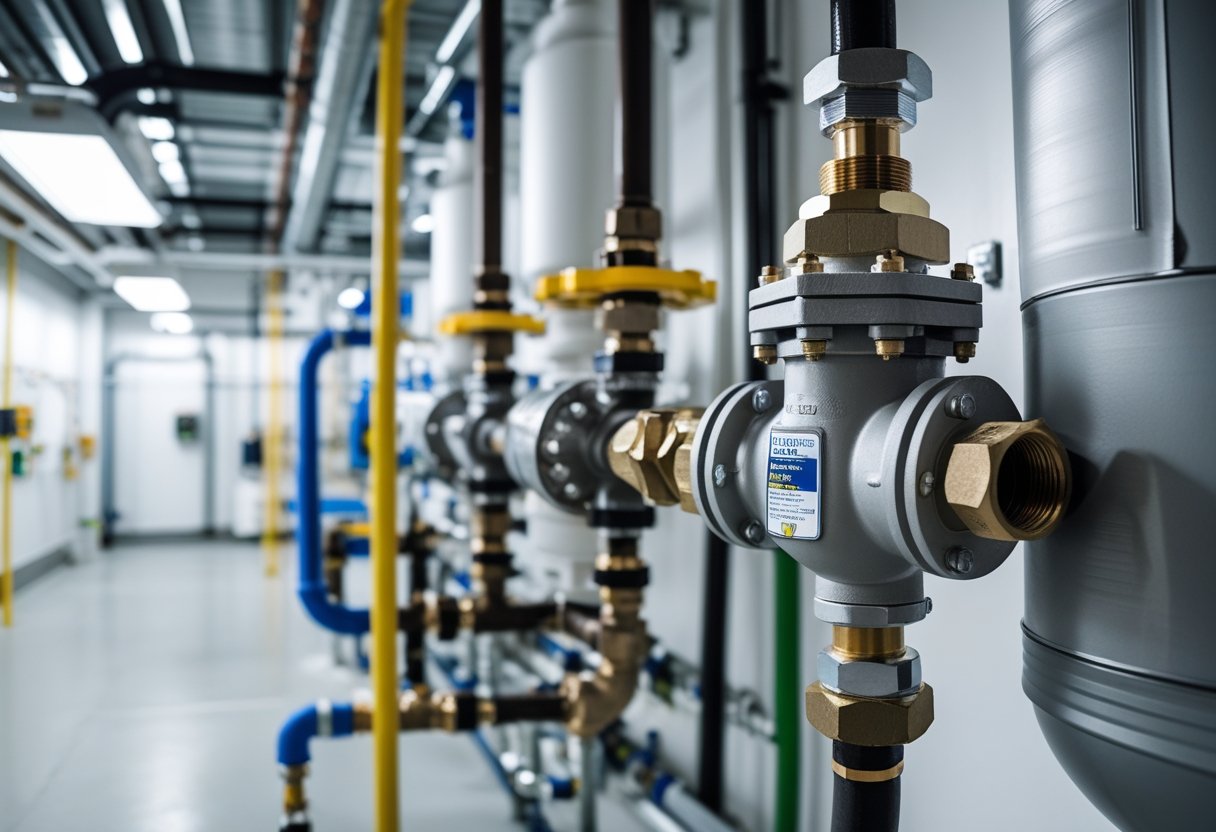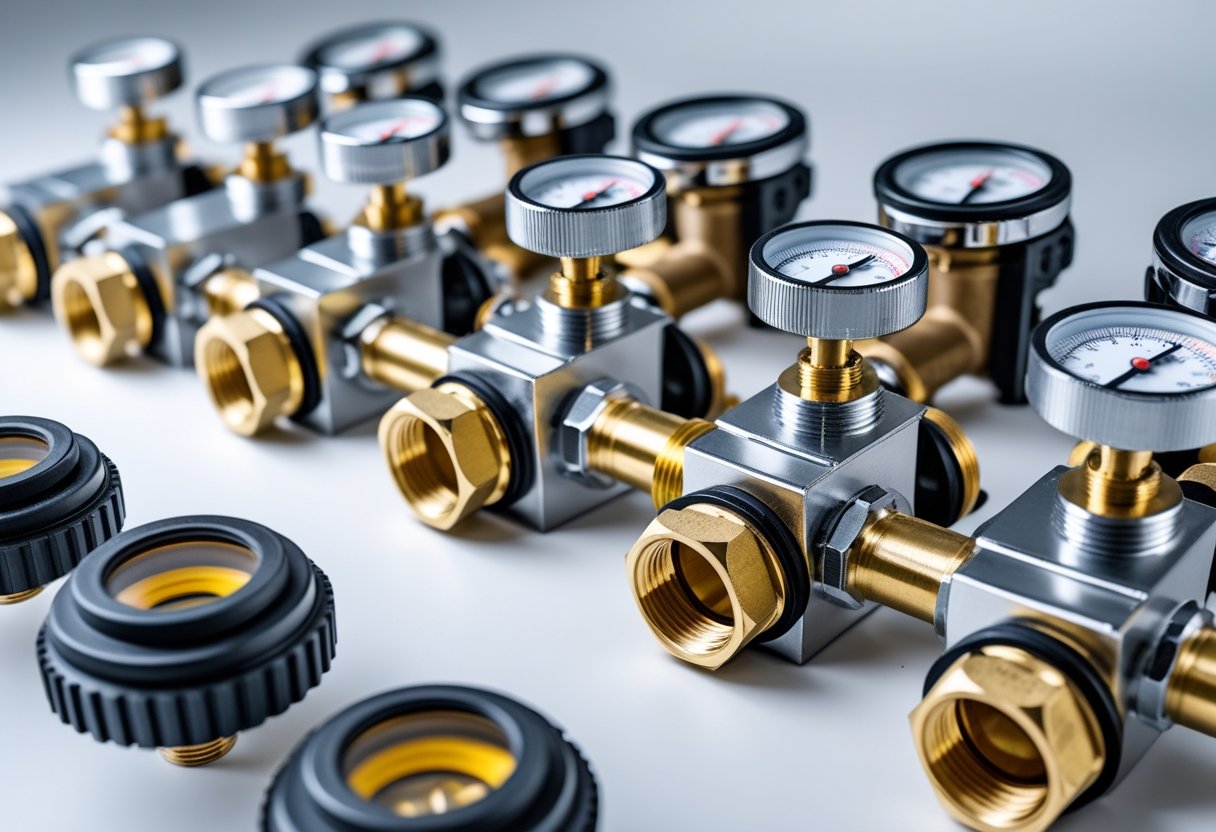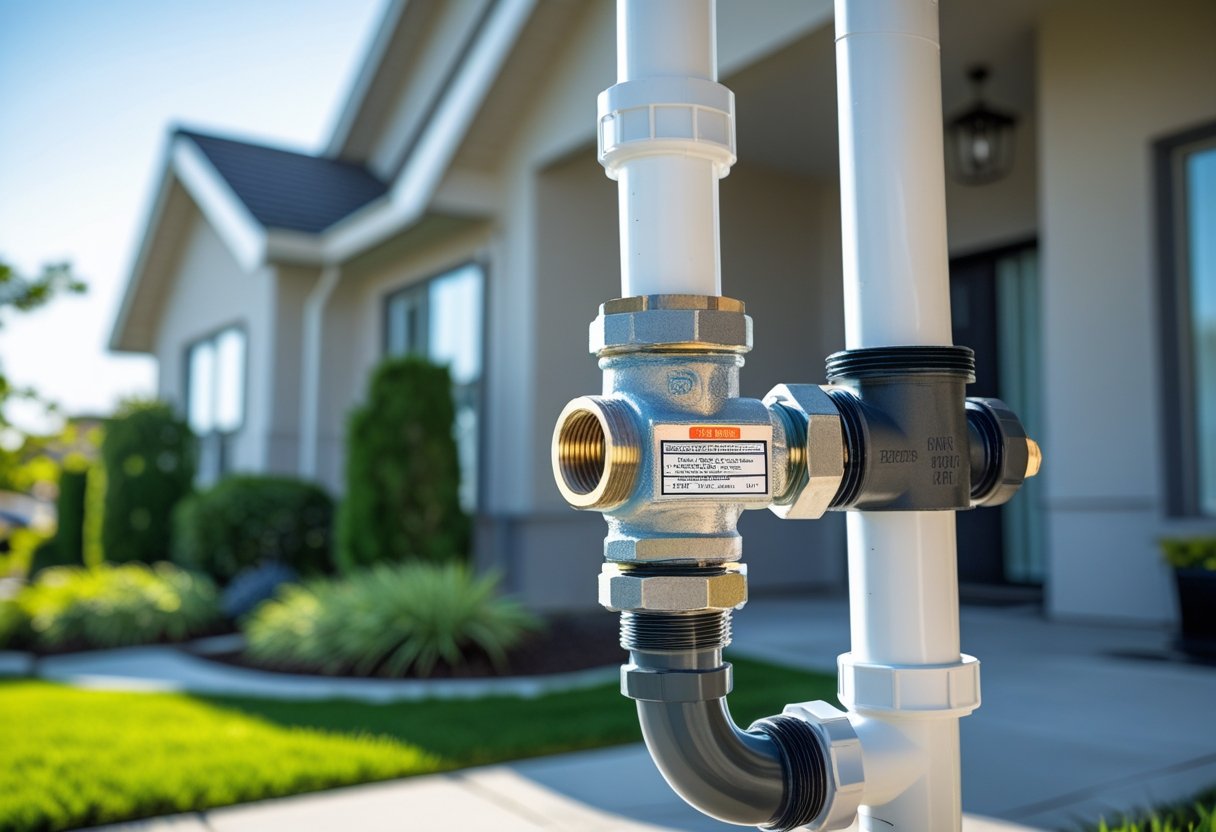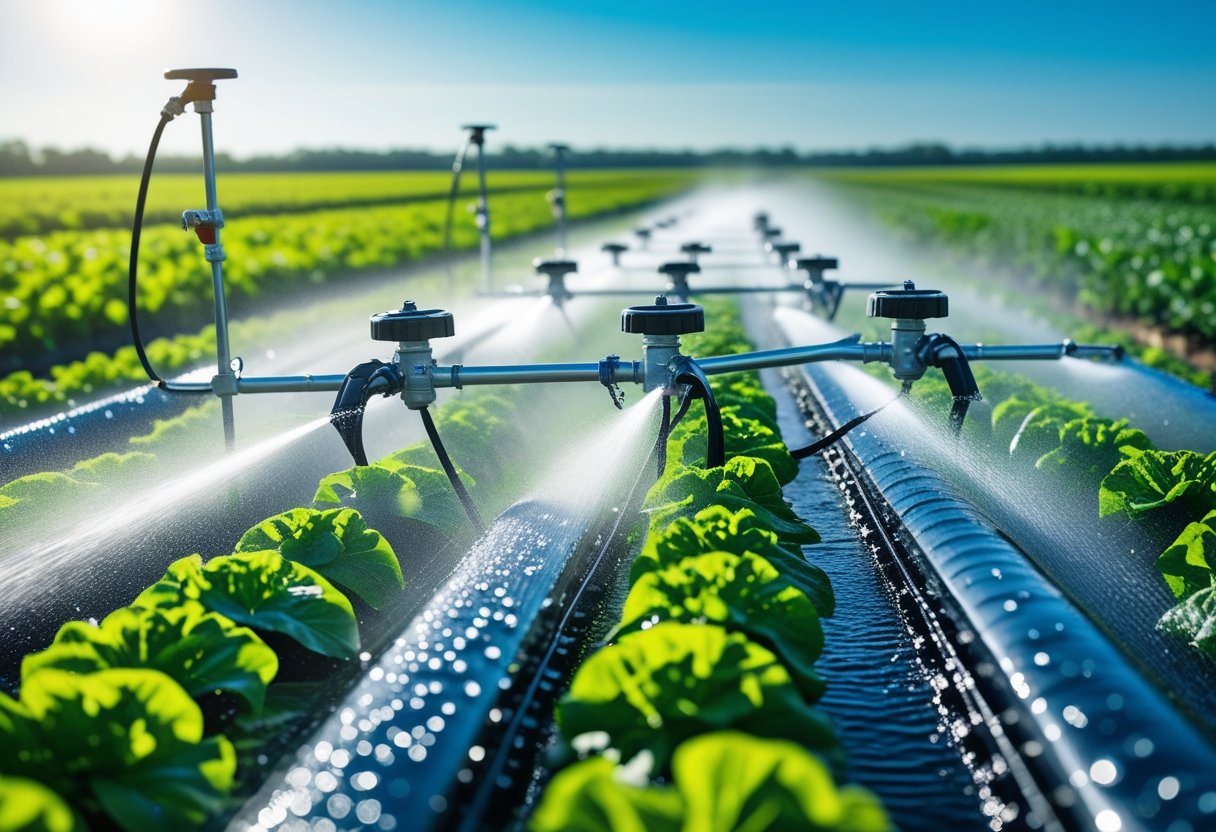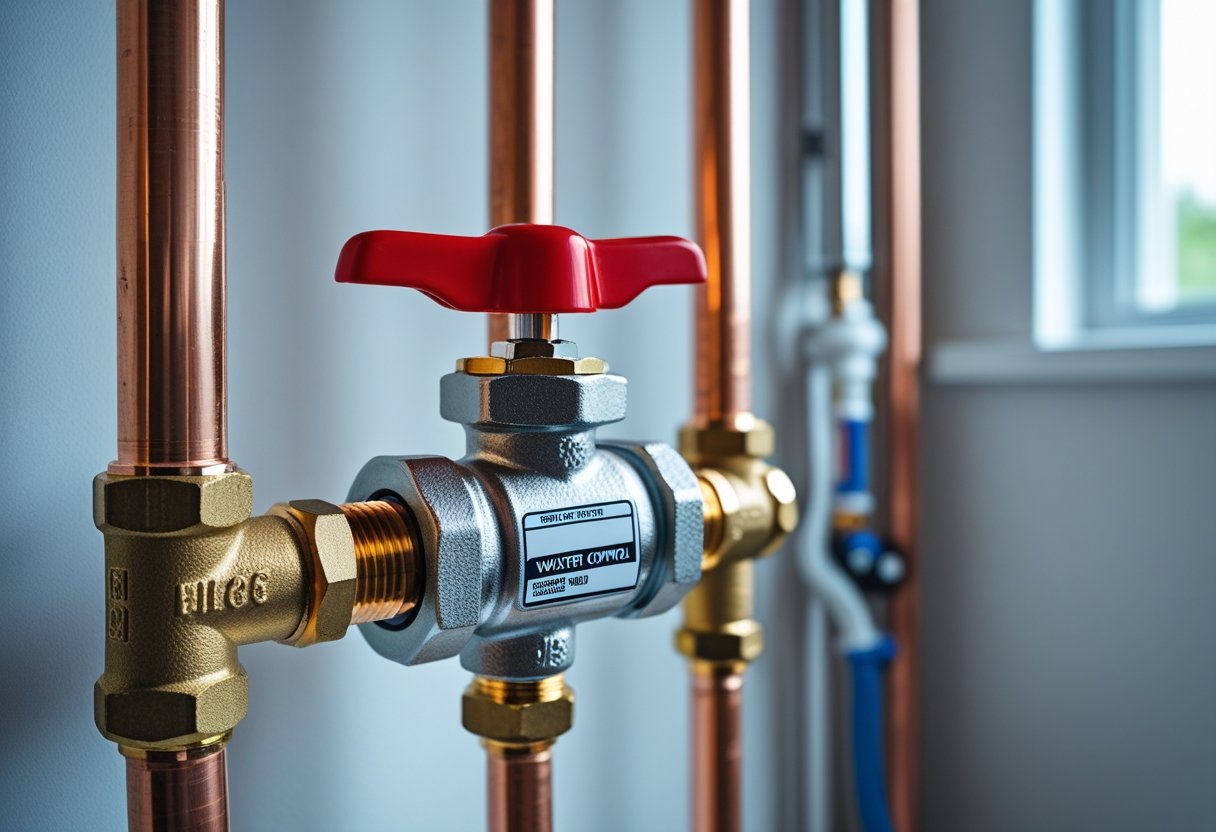Protecting your water quality really matters—it's about your family's health and the safety of your whole neighborhood. One of the best ways to do that? Backflow prevention systems. These devices keep dirty or contaminated water from sneaking back into your clean water lines, so your drinking water stays, well, drinkable.
Backflow shows up when water pressure shifts and suddenly, things start flowing the wrong way. When you install and take care of backflow preventers, you’re not just following the rules—you’re actually lowering your risk of contamination. At Pacific Backflow, we help folks all over San Diego County with testing, repairs, and new installs to make sure your water stays protected.
If you ignore your backflow system, you could face health risks or expensive headaches later. With help from Pacific Backflow, you get fast, friendly service and can stop worrying about what’s coming out of your tap.
Understanding Water Quality and Contamination Risks
Water quality has a direct impact on your health—and, honestly, the planet around you. Keeping it clean means knowing where things go wrong, how contamination creeps in, and why you really can’t afford to let your guard down.
Common Sources of Water Contamination
Contamination comes from all sorts of places. Here are some usual suspects:
- Backflow: When water reverses, dirty stuff from sinks or sprinklers can end up in your clean supply.
- Chemical spills: Pesticides, fertilizers, industrial chemicals—they can all leak into water.
- Wastewater leaks: Faulty plumbing lets sewage or gray water mix with drinking water.
- Natural sources: Even soil, bacteria, or minerals can mess with your water quality.
Backflow is a big deal because it can dump harmful bacteria or chemicals right into your taps. Backflow preventers block water from reversing, so your water stays clean.
Health Impacts of Poor Water Quality
Contaminated water is no joke. It can bring on:
- Stomach bugs—think diarrhea, vomiting, the works
- Skin infections if you wash with it
- Long-term diseases from toxic chemicals
Kids, older adults, and anyone with a weak immune system? They're at higher risk. Using safe water for everything—drinking, cooking, cleaning—just makes sense. That’s why annual testing by companies like Pacific Backflow is so important. They make sure your water’s not hiding anything dangerous.
Importance of Clean Water Supply
You use clean water for just about everything—drinking, cooking, showering, laundry. If your water gets contaminated, illness can spread fast and your stuff might get damaged. Clean water means:
- Healthier families
- Safer homes and local wildlife
- Plumbing and appliances that actually last
Keeping your water supply safe comes down to using backflow prevention systems and testing them regularly. Pacific Backflow helps folks in San Diego County stay on top of this with timely testing, repairs, and installs.
What Are Backflow Prevention Systems?
Backflow prevention systems are your plumbing’s bodyguards. They stop dirty water from sneaking back into your clean water supply. These devices control water direction and pressure inside pipes, so your drinking water stays safe. Different setups work for different backflow risks.
Definition and Purpose
A backflow prevention system is a set of devices in your plumbing that block water from reversing. The whole point is to keep nasty stuff—chemicals, bacteria, waste—out of your clean water.
Most places require these systems by law because contaminated water can cause real harm. They make sure water only moves forward, so you don’t have to worry about what’s in your glass.
How Backflow Occurs
Backflow happens when water reverses direction in your pipes. Usually, this is because of a sudden drop in pressure—like when a fire hydrant opens or a water main breaks.
When that pressure drops, dirty water can get sucked into your plumbing. That’s when things go sideways and your drinking water is at risk.
Types of Backflow Prevention Devices
There are a few main types of devices that keep backflow at bay:
- Vacuum Breakers: Super simple, good for outdoor faucets to stop back-siphonage.
- Double-Check Valves: Two valves team up to stop backflow, best for lower-risk spots.
- Reduced Pressure Zone (RPZ) Assemblies: More advanced, they kick in when pressure changes, great for high-risk areas with chemicals.
Each device fits a different situation. When you need one installed or tested, companies like Pacific Backflow offer quick, reliable help to keep you in the clear.
How Backflow Prevention Protects Water Quality
Backflow prevention systems are the unsung heroes keeping your water clean. They block dirty water from slipping into your fresh supply. You’ll find them in the right places throughout plumbing for both homes and businesses.
Preventing Contaminant Entry
Backflow is water moving the wrong way, and that can pull in dirt, chemicals, or bacteria. A backflow preventer makes sure water only flows forward.
Devices like RPZ valves and double-check valves react fast to pressure changes and close off the path for backward flow. That way, your drinking water isn’t mixing with anything it shouldn’t.
By blocking contaminants, these devices help you dodge health issues and avoid expensive plumbing fixes.
Critical Control Points in Plumbing Systems
You’ll find backflow preventers at spots where clean water’s most at risk—think where your main water line connects to sprinklers, fire systems, or any equipment that could introduce something nasty.
Putting devices at these key points means if pressure drops or shifts, dirty water can’t sneak back in. This setup keeps you in line with local water district rules, too.
Professional outfits like Pacific Backflow handle testing, repairs, and installs to keep things locked down. Regular checks make sure your system’s actually doing its job.
Residential and Commercial Applications
Homes and businesses both need backflow prevention. At home, you’re protecting against things like irrigation or pool water mixing with your drinking supply.
For businesses, stakes are higher—plumbing gets more complicated, and chemicals might be involved. Hospitals, factories, restaurants—they all count on solid backflow devices.
Pacific Backflow covers annual testing, repairs, and installs all over San Diego County. Whether it’s your house or your business, their team keeps your water safe and you out of legal trouble.
Key Regulations and Standards
Protecting your water means sticking to the rules—these standards make sure everyone’s water stays safe. You’ll need to know what’s required for installing and maintaining backflow prevention systems, plus how testing works to stay on the right side of the law.
Local and Federal Compliance Requirements
The Safe Drinking Water Act lays down the federal guidelines to keep public water clean. It says all water systems need backflow prevention devices wherever there’s a risk of contamination.
Local authorities—like your city water district—add their own rules. They’ll tell you what devices you need, when to test, and when to fix things. You’ve got to follow both the federal stuff and your local codes.
If you skip compliance, you could face fines—and put your family at risk. That’s why annual testing and proper installs aren’t optional. Pacific Backflow helps you check all the boxes so your water stays protected.
Testing and Certification Procedures
Annual backflow testing makes sure your system’s up to snuff. Certified testers follow strict steps set by local water authorities—inspecting devices, checking valves, making sure seals are tight, and recording everything.
If your device flunks, you need repairs or a replacement, fast. Certified techs retest before giving the green light.
After testing, a report goes to the local water agency to prove you’re compliant. That paperwork keeps your records current with officials.
Pacific Backflow’s crew handles testing and files the reports for you, so you don’t have to stress about compliance.
Installation and Maintenance Best Practices
Keeping your water safe means picking the right backflow preventer, getting it checked regularly, and steering clear of common install mistakes. These steps are key for a system that works and meets local codes.
Choosing the Right Backflow Preventer
You’ll want a backflow preventer that matches your plumbing and fits local water code standards. There are different kinds—RPZs, double-check valves, pressure vacuum breakers. Where you put it and how risky the spot is will help you decide.
Always go for certified devices approved by your water district. Cheap or wrong preventers can fail and let in contaminants. Getting pro advice is worth it.
Pacific Backflow installs devices tailored to your setup, so you know your water is clean.
Routine Inspection and Testing
You can’t just set it and forget it. Regular inspections and yearly testing are a must. Make sure your backflow preventer gets checked at least once a year to keep things legal and safe.
During testing, techs look for leaks, pressure issues, and valve problems. If something’s off, it needs fixing right away.
Keep your test and repair records handy to show you’re compliant. Pacific Backflow’s certified testers handle this smoothly and take care of the paperwork.
Common Installation Mistakes
Some install errors can make your backflow preventer useless or even mess up your plumbing. Don’t put devices too close to other pipes or in spots that are tough to reach.
Wrong placement or poor slope can stop the device from working. Make sure it’s above ground and easy for techs to access.
Using off-brand parts or skipping code requirements is asking for trouble. Letting experienced pros handle the job usually saves you headaches (and cash) down the line.
Upgrading and Modernizing Water Systems
Upgrading your water system isn’t just a good idea—it’s often necessary for safety and compliance. Knowing when your equipment’s past its prime can save you from bigger problems. Plus, newer tech can make life easier and your water safer. Preventing contamination only gets easier with the right upgrades.
Signs Your System Needs Updating
If your backflow device is over 10 years old, chances are it’s not as reliable as it once was. Notice leaks, low water pressure, or failed tests? Time to think about an upgrade.
A big red flag is when your device no longer meets local codes. Old systems might not handle today’s contamination risks. Maintenance reports can tip you off early.
Updating your system protects your property and your community’s water. If you spot any of these signs, don’t wait—call a trusted pro for a checkup or replacement.
Innovative Technologies in Backflow Prevention
Newer backflow devices use better materials and smarter designs—they’re less likely to leak and react faster to pressure changes. RPZ assemblies are a favorite for handling chemical or irrigation risks.
Some modern systems even have alarms or electronic monitoring, so you’ll know right away if something’s wrong.
Upgrading to these gives you peace of mind and usually cuts down on maintenance costs. Pacific Backflow can help you pick and install the latest gear to keep things running smoothly in San Diego County.
Community Awareness and Prevention Strategies
Keeping water safe isn’t just about equipment—it’s about knowing what to watch for and who to trust. When you understand the basics and have the right partners, preventing backflow gets a whole lot easier.
Educating Homeowners and Businesses
You play a bigger part in water safety than you might think. Learning how backflow works—and what can go wrong—helps you catch issues before they turn into real headaches. Backflow can pull contaminants into your water supply, and that’s not something anyone wants to deal with.
It’s worth knowing what backflow prevention devices you’ve got at your place. These things need regular testing to keep them doing their job. In fact, a lot of local regulations call for annual testing to keep everything up to code.
If you share what you know with neighbors or local businesses, you’re making your whole community safer. It’s kind of a team effort. Even small things—like reporting a leak or weird-tasting water—can make a difference.
Working with Certified Specialists
Certified backflow pros know how to test, repair, and install these devices the right way. They stick to the rules and keep your system up to safety standards.
You’ll want to hire people who show up fast and handle the paperwork, too. Pacific Backflow covers all of San Diego County, offering quick testing and solid service. Their technicians check that your backflow preventer is not just working, but fully compliant.
If your device fails or needs an upgrade, qualified specialists will sort it out with the right gear. Don’t put off calling for help if something seems off. Getting regular checkups from the pros cuts down on risks and helps keep your water safe for everyone.
Cost Considerations and Long-Term Benefits
Thinking about costs and the long haul? It’s good to know what you’re getting into with backflow prevention. There’s the upfront cost for installation and then regular testing, but in the end, you’re protecting your property and water quality for years to come.
Initial Investment and Ongoing Expenses
Putting in a backflow preventer usually costs somewhere between $130 and $1,200. Most folks end up spending around $300. The price depends on what kind of device you need and how big your place is.
You’ll also need annual testing to keep things working and stay legal. Testing usually costs less than the initial install, but it’s important—nobody wants fines or contaminated water.
Sometimes stuff breaks or fails inspection, and that’s when you’ll need repairs or maybe a replacement. Having a trusted service like Pacific Backflow nearby means you can get repairs done fast and dodge bigger water problems later.
Protecting Property Value
Taking care of your backflow system actually adds value to your property. It shows you care about water safety and follow health standards.
That can make your place more appealing to buyers or tenants. Plus, you’re less likely to deal with water damage or expensive contamination issues that could hurt your property’s value.
Regular maintenance and professional testing—like what Pacific Backflow offers—keep your system in good shape. Protecting your water is just another way to keep your property safe and valuable.
Resources for Further Learning
There’s a lot more you can learn about backflow prevention if you want to dig deeper. Trusted organizations have guidelines, rules, and support to help you keep your water quality where it should be.
Government and Environmental Agencies
Government agencies set the rules for backflow prevention. The Environmental Protection Agency (EPA), for example, lays out safety guidelines to keep drinking water clean. You can find local codes, testing requirements, and educational materials on their sites.
State and local water departments are also good resources. They handle backflow testing, inspections, and repairs in your area. Checking with your local water authority is the best way to make sure you’re following the right process.
Some agencies have online portals for submitting compliance reports and finding certified testers. Staying on top of local laws helps you avoid headaches and keeps your community healthy.
Industry Associations
Industry groups focus on backflow prevention and water safety. They offer training, certification, and advice for both property owners and professionals. These organizations help you keep up with new technology and best practices.
You’ll find detailed guides on installing and maintaining backflow preventers. Many associations run workshops, webinars, and events, so you can stay updated on any rule changes.
They also connect you with certified testers and repair pros. Using their network makes it easier to find someone reliable who knows what they’re doing.
Pacific Backflow follows the standards these groups recommend, keeping your system safe and compliant. That’s one less thing to worry about when it comes to protecting your water.
Frequently Asked Questions
Backflow prevention systems keep your water safe by stopping dirty water from sneaking back into clean supplies. Knowing how these systems work, the different types, and maintenance needs helps you protect your home or business.
What are backflow prevention systems and how do they work?
Backflow prevention systems stop water from reversing direction and mixing with your clean supply. They sense pressure changes and close valves automatically, blocking anything from flowing the wrong way. That’s how they keep contaminants out of your drinking water.
Can you explain the different types of backflow prevention devices available?
You’ll usually see reduced pressure zone (RPZ) valves, double-check valves, and pressure vacuum breakers. RPZs handle higher-risk situations, double-check valves are for less risky setups, and pressure vacuum breakers are common in irrigation systems.
How often should backflow prevention devices be tested and maintained?
Test your backflow preventer every year. Regular checks make sure it’s still working and up to local standards. Maintenance might mean cleaning, repairs, or replacing the device if it doesn’t pass inspection.
What are the potential consequences of backflow in drinking water systems?
Backflow can let chemicals, bacteria, or even waste contaminate your water. That’s a real health risk. It can also mess up your plumbing and lead to expensive repairs.
Are there specific regulations or codes that dictate the use of backflow preventers?
Definitely. Local and state water authorities require backflow preventers for a lot of buildings. These rules protect public health, and you’ll usually need annual testing and certified installation to stay compliant.
What steps can homeowners take to ensure their backflow prevention system is effective?
Schedule regular testing and servicing for your backflow device with qualified professionals. Keep an eye on the system—make sure it stays protected from damage or tampering. If you’re not sure where to start, Pacific Backflow can help with quick, trustworthy testing and repairs all over San Diego County.

